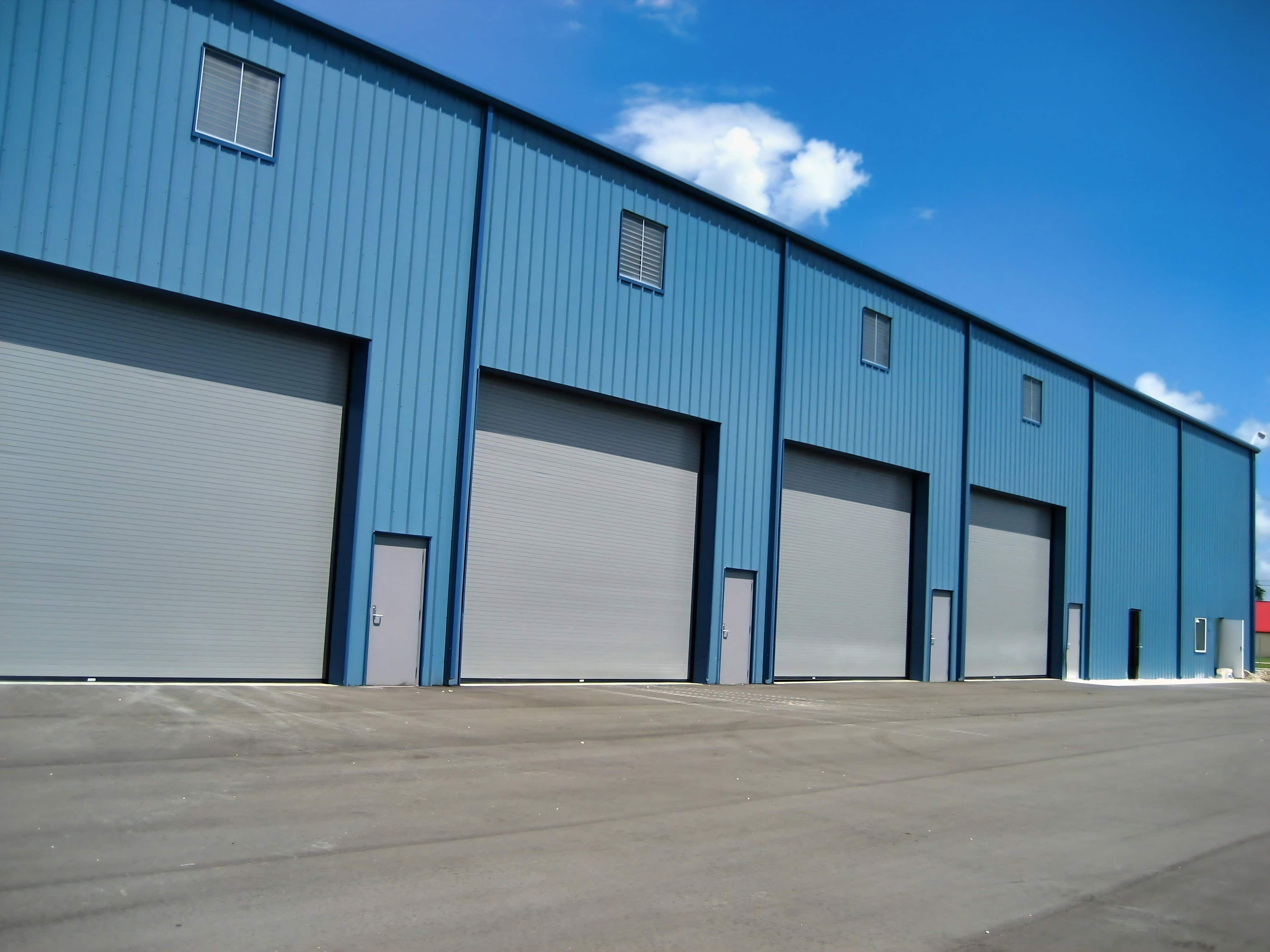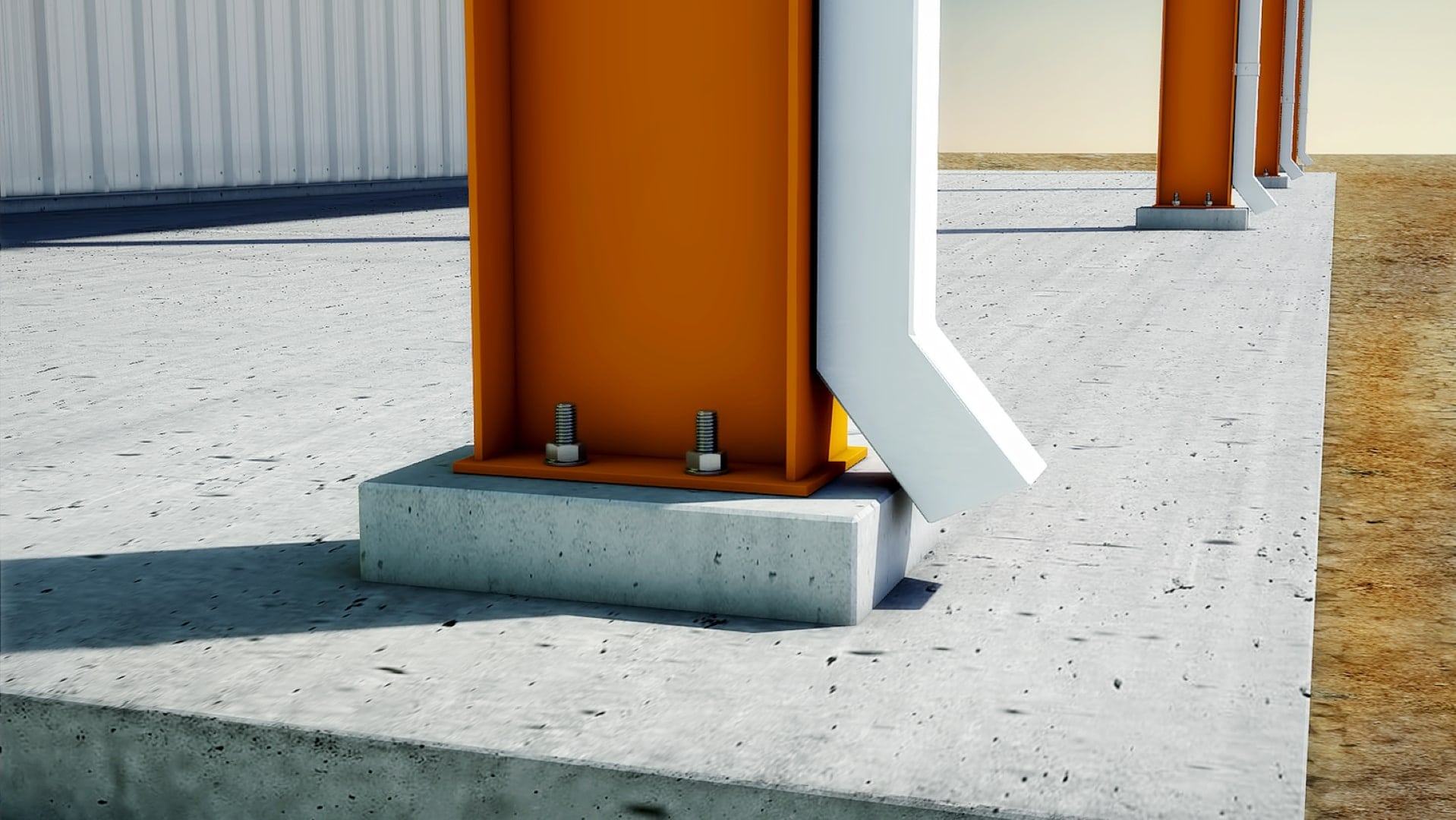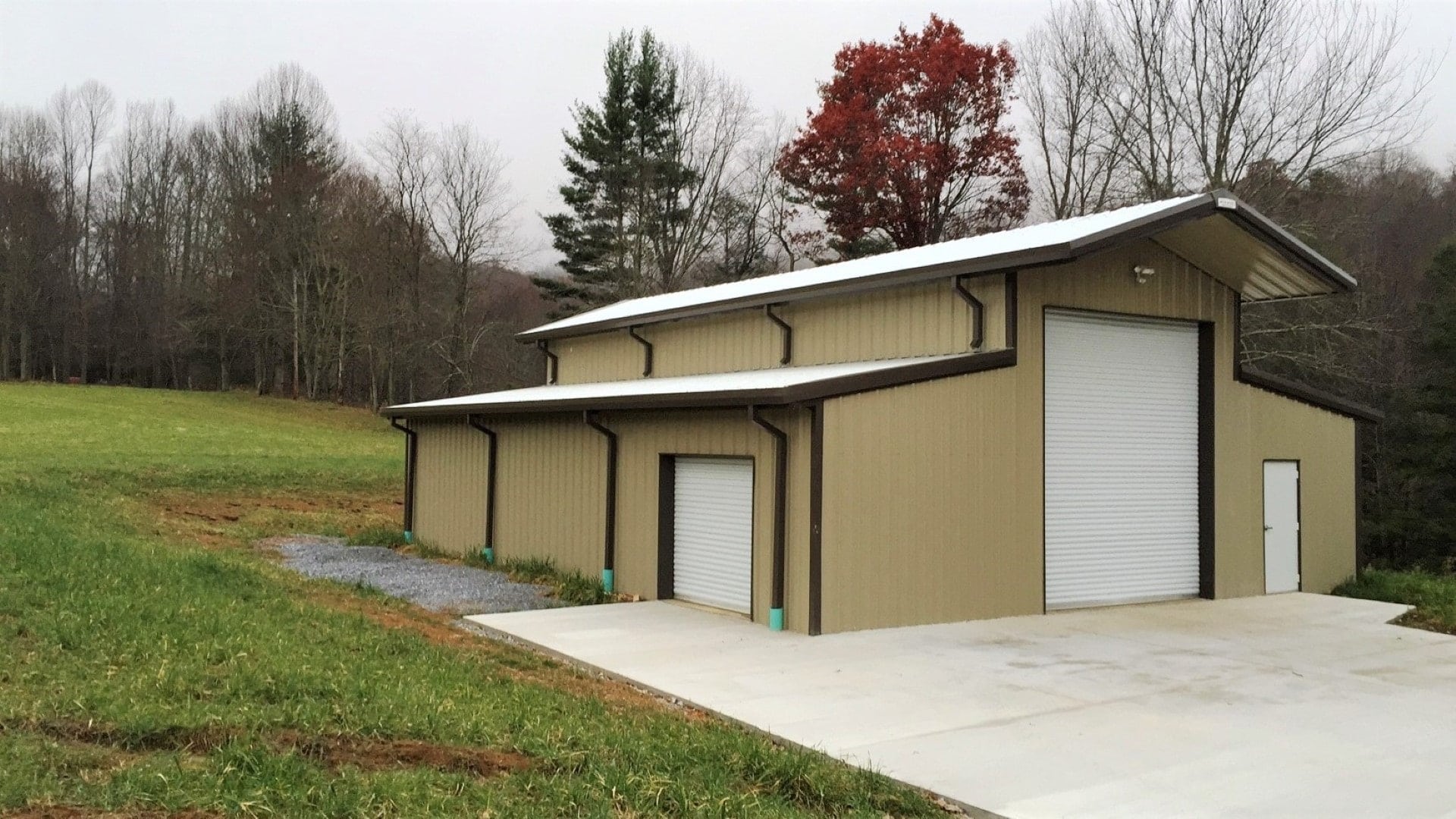
Steel Building
Gutters & Downspouts
One of the most commonly requested metal building options, gutters & downspouts play an important role in helping to manage the flow of water coming off the roof of the metal building.
Of all the steel building accessories, Gutters & Downspouts are probably the most commonly requested. While gutters & downspouts are not very complicated, there are some things that customers should keep in mind when deciding on whether to buy them with their steel buildings or buy them at a later date from a local gutter company.
Appearance
It’s important to remember that while gutters & downspouts don’t often get a lot of attention, they are going to have an impact on the look of the steel buildings they are installed on and standard steel building gutters & downspouts are commercial and look commercial! The most common industry gutter is a simple 8″ box with a simple 5″ box downspout.
Customers putting steel buildings on their residential property or those looking to soften the industrial “look” of steel buildings are probably going to be disappointed with look of commercial gutters & downspouts. It should be noted that a benefit of ordering gutters and downspouts from the metal building supplier is that both the gutters and downspouts and be color matched to the wall panels, roof panels, and other trim on the building.
Functionality
While factory gutters do a fine job of directing water down and away from the steel buildings they are installed on, they are not seamless – as they need to be cut to length so they can be shipped to the jobsite. In addition, factory gutters do not have any of the popular leaf guard systems that prevent leaves and/or debris from being washed into them. So, if the steel buildings they are installed on are located in close proximity to trees, regular maintenance might become an issue.
Whether a customer decides to buy gutters & downspouts from the steel building supplier or from a local gutter company, customers often ask questions about downspout quantity and placement.
While each situation is different, a general rule of thumb is that a downspout should be located at each corner of the building and at each frame line. This rule of thumb can be influenced by factors such as building size, bay spacing, framed opening location, lean-to size and location, and site-specific rain intensity and drainage issues.
The Buck Steel Advantage
Whether you are considering a 40′ x 60′ metal garage, a 10,000 sq. ft. steel warehouse, a 3,000 sq. ft. airplane hangar, a 30,000 sq. ft. open steel riding arena, or a new steel church for your congregation, a steel building project can sometimes be intimidating to navigate alone. Whether for personal or business use, you want to minimize the cost of your steel building project while maximizing the benefit it provides.
Why not give yourself The Buck Steel Advantage and have a reputable metal building supplier, serving the steel building customer for nearly 20 years, with 1,000’s of completed projects guide you through the metal building process?
Request A Quote Today or Call (866) 574-2825 to speak to a member of our team.



We welcome your comments and questions!